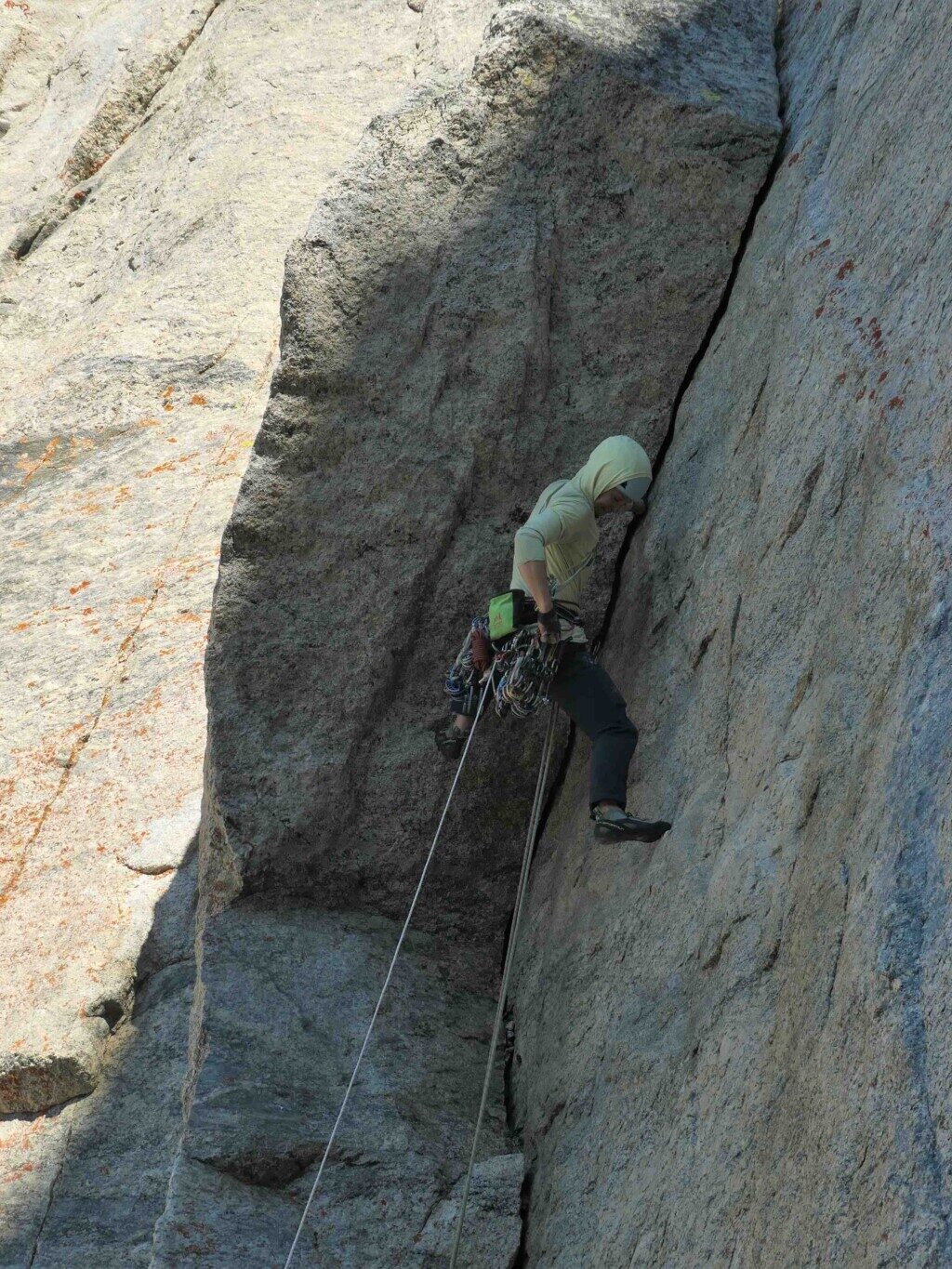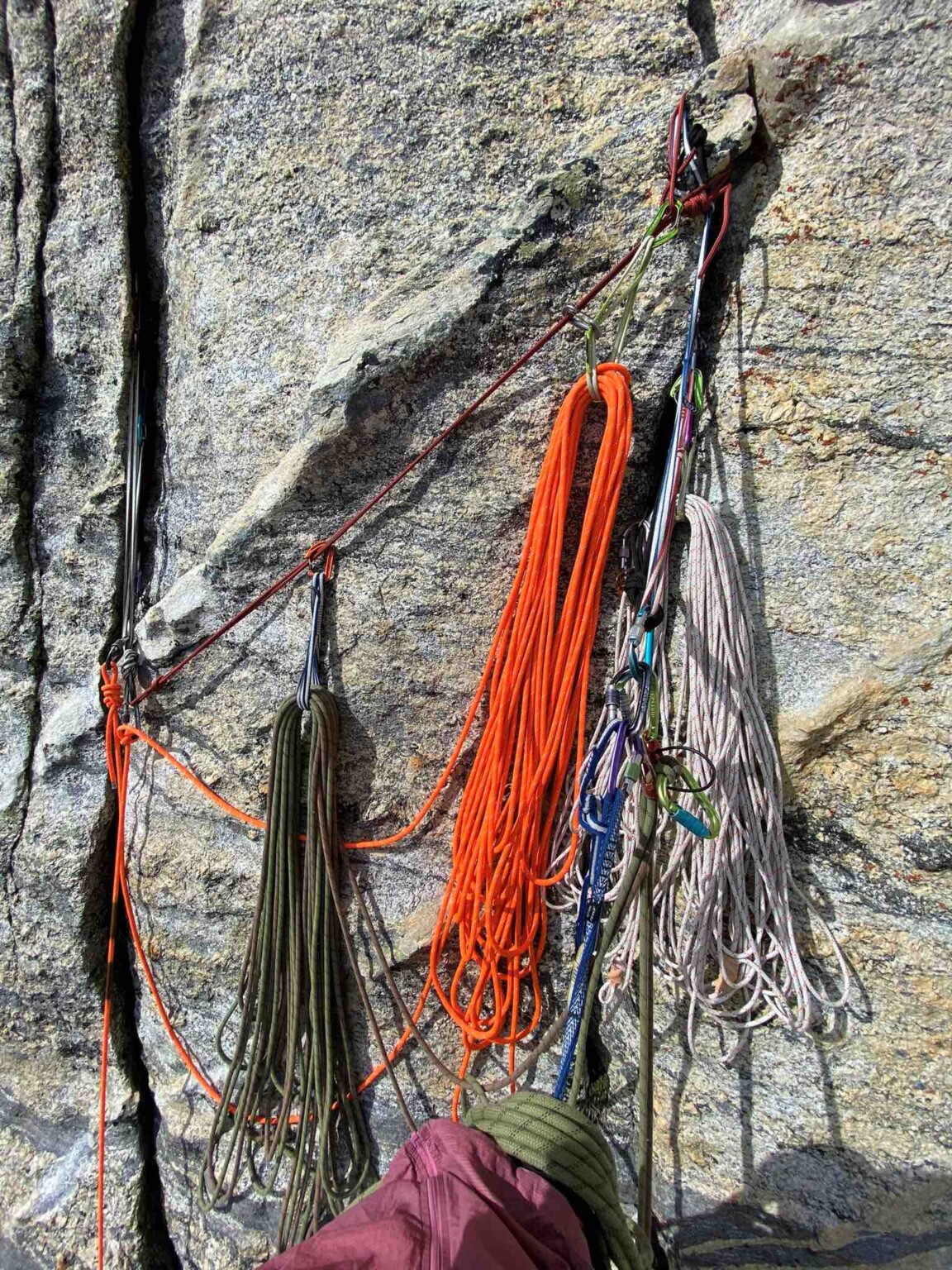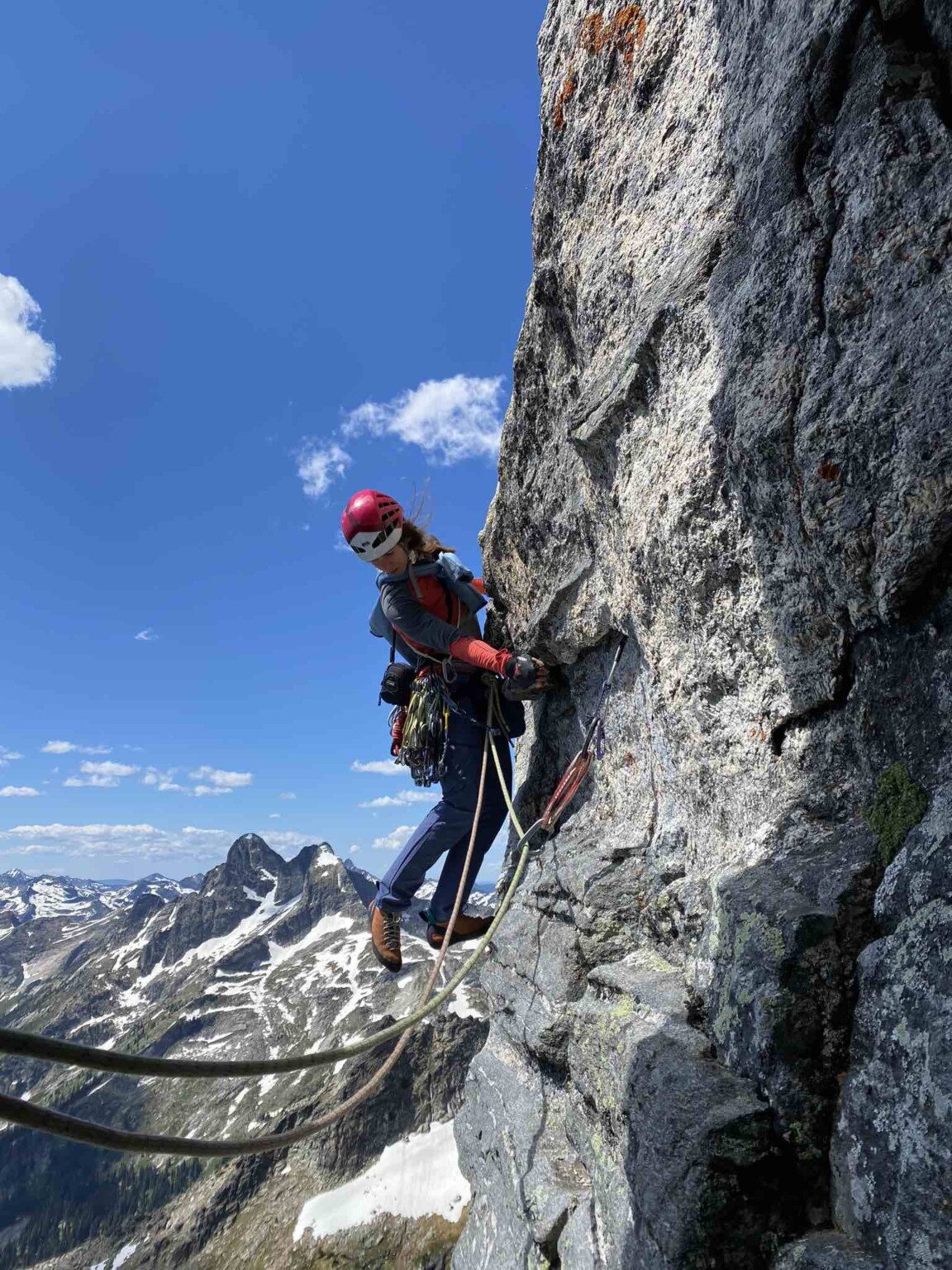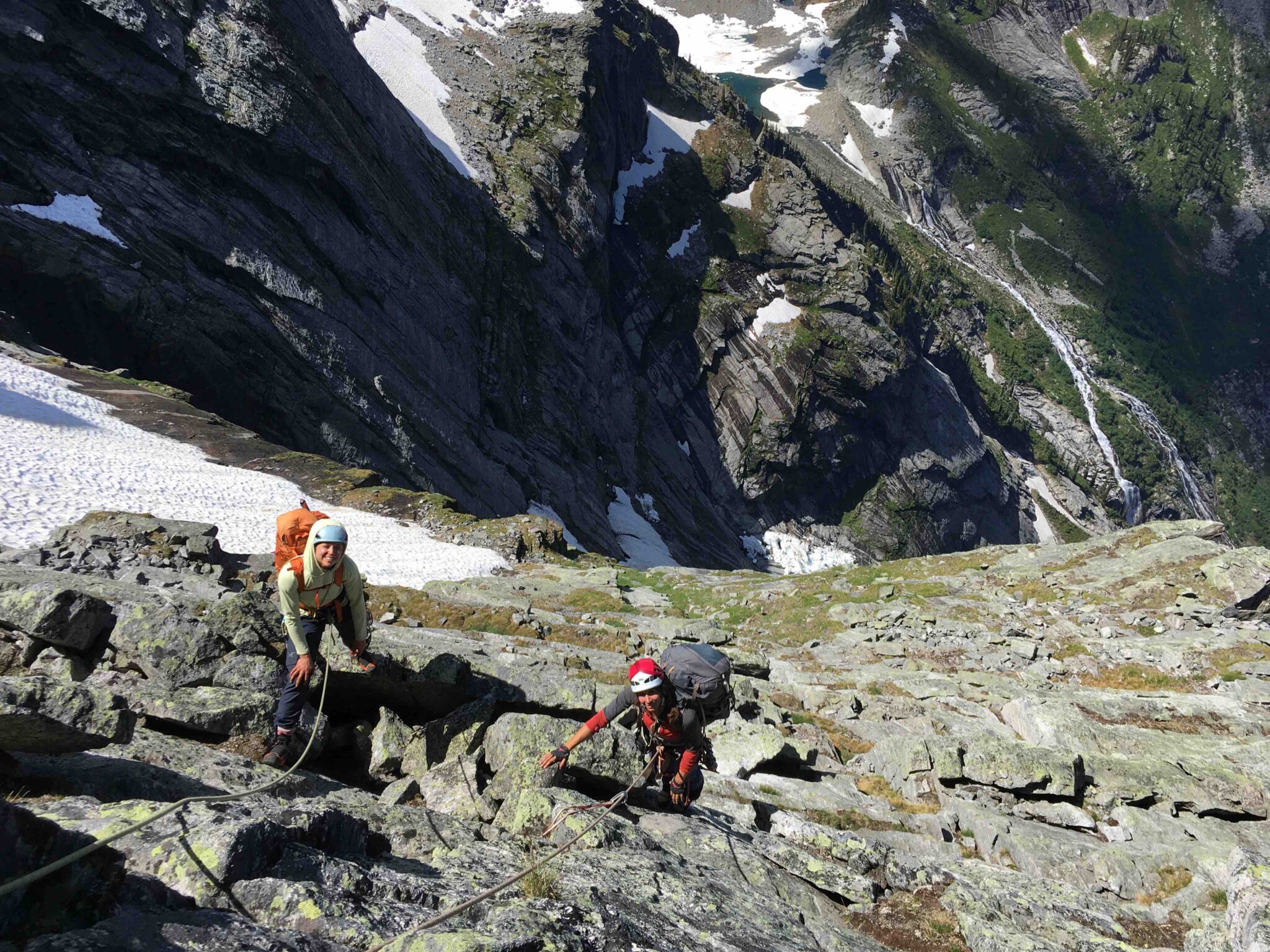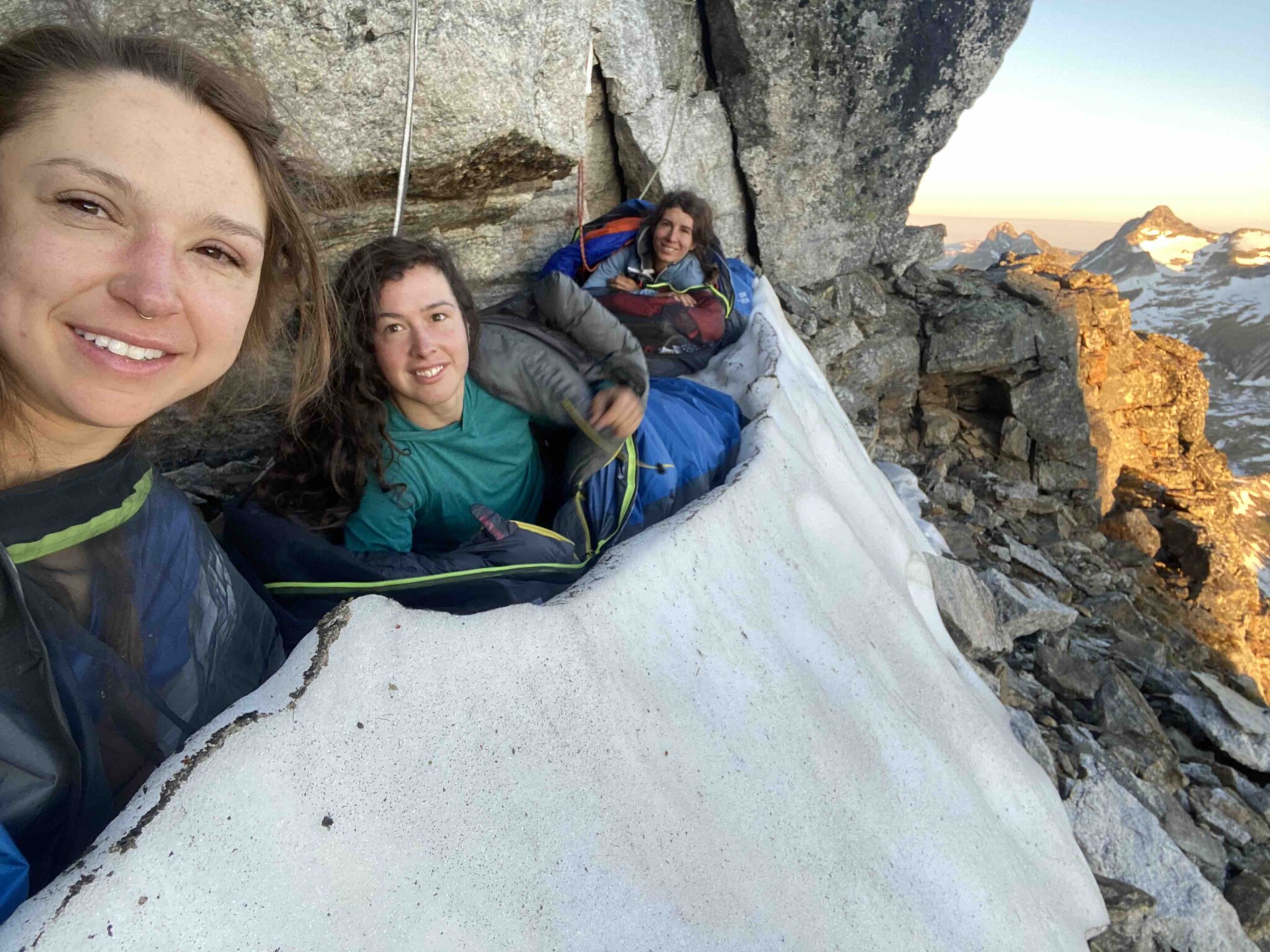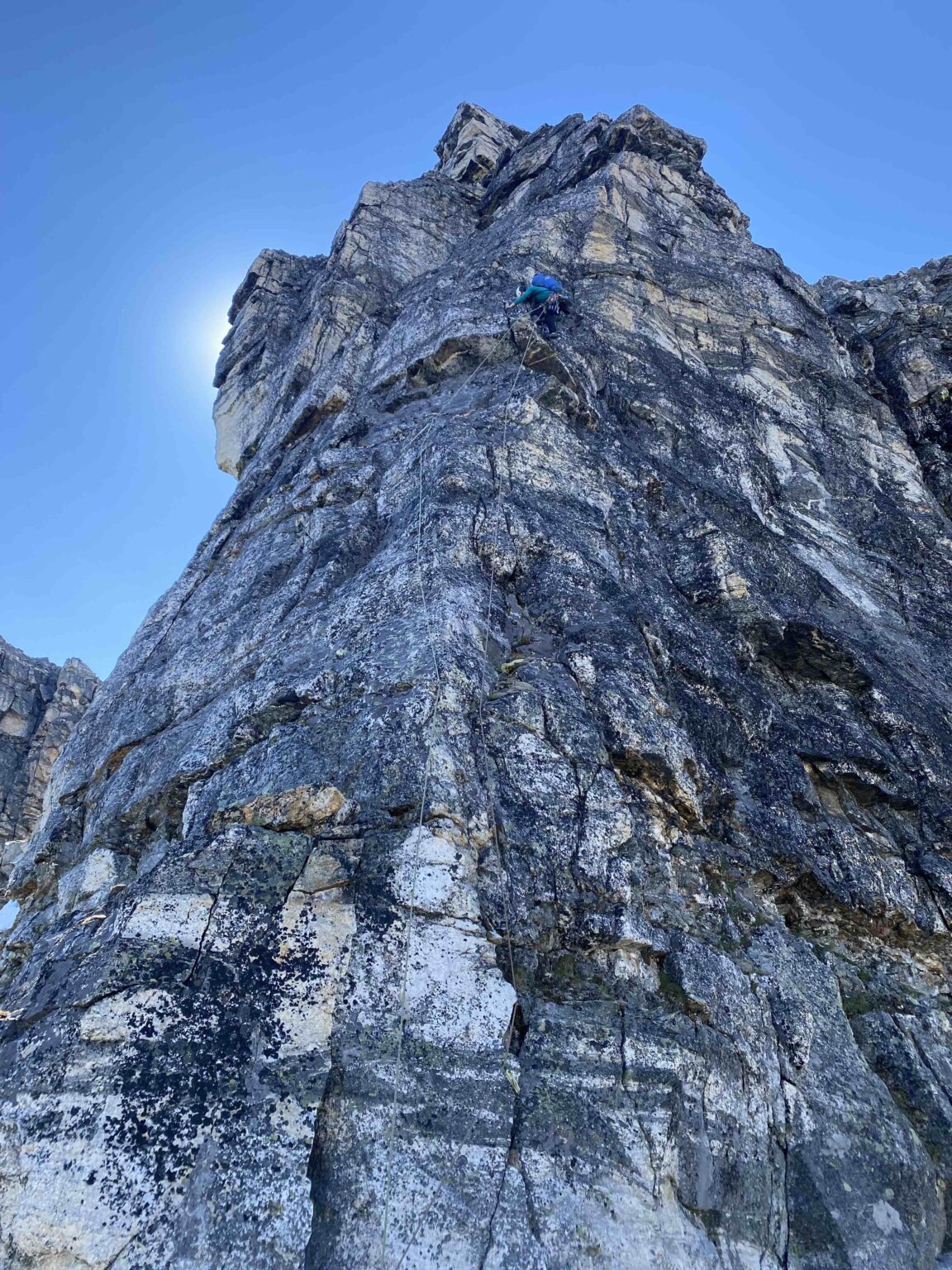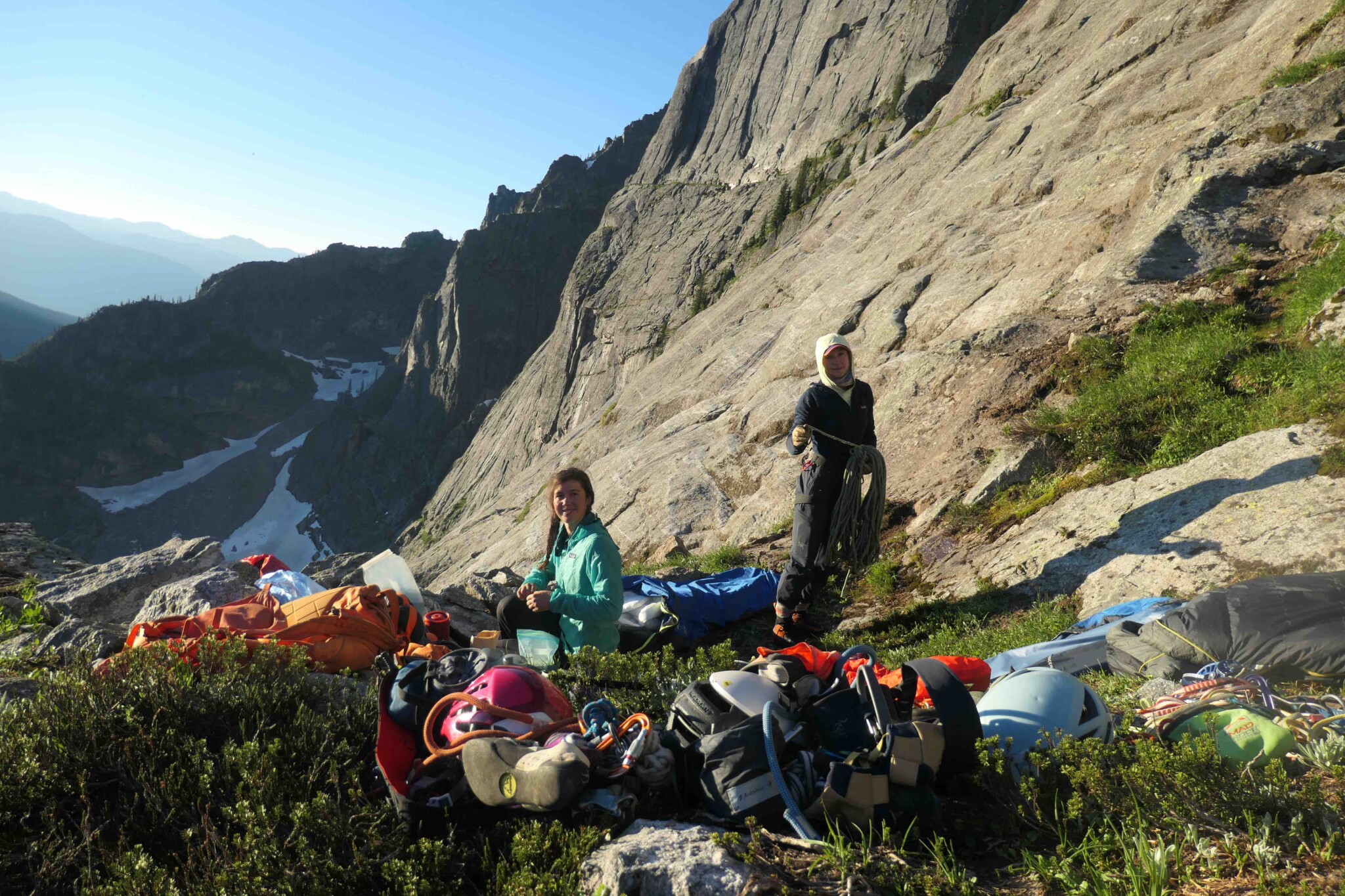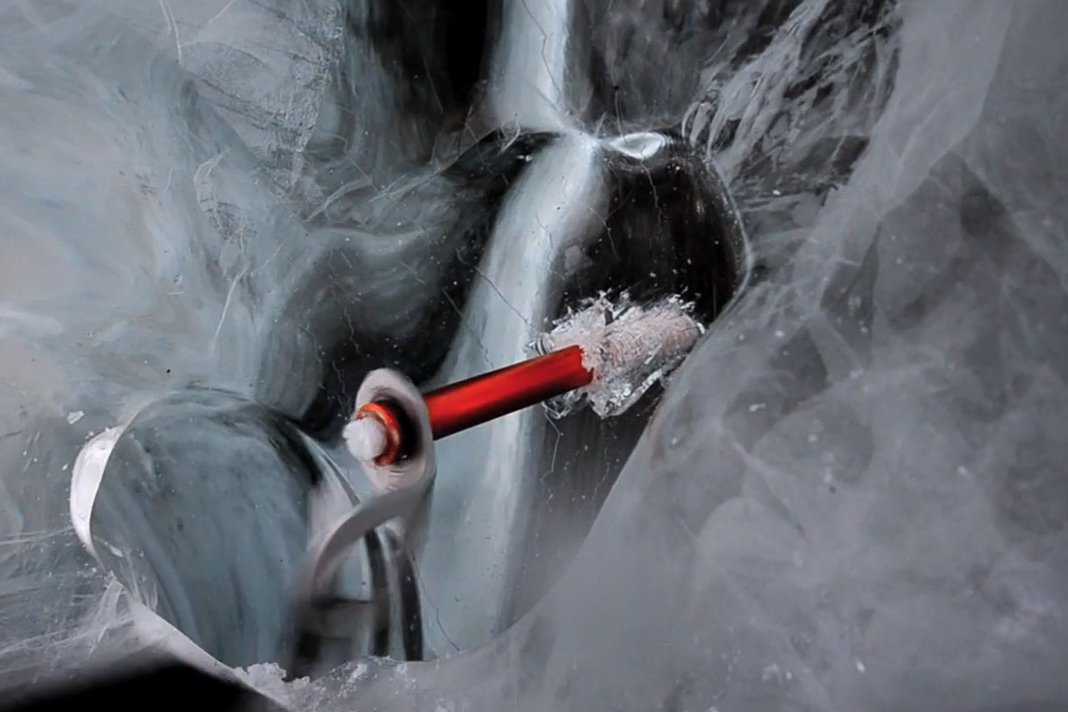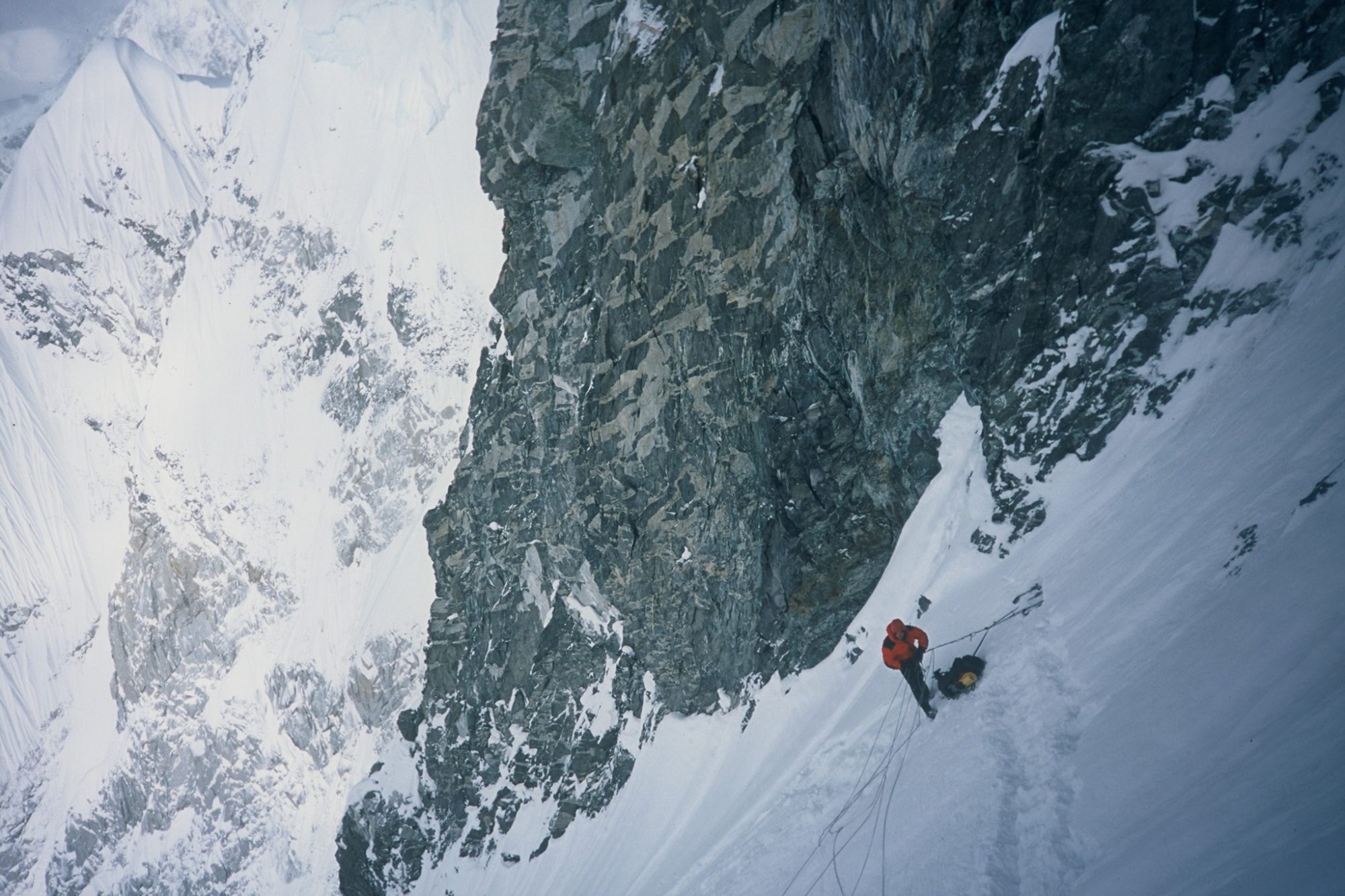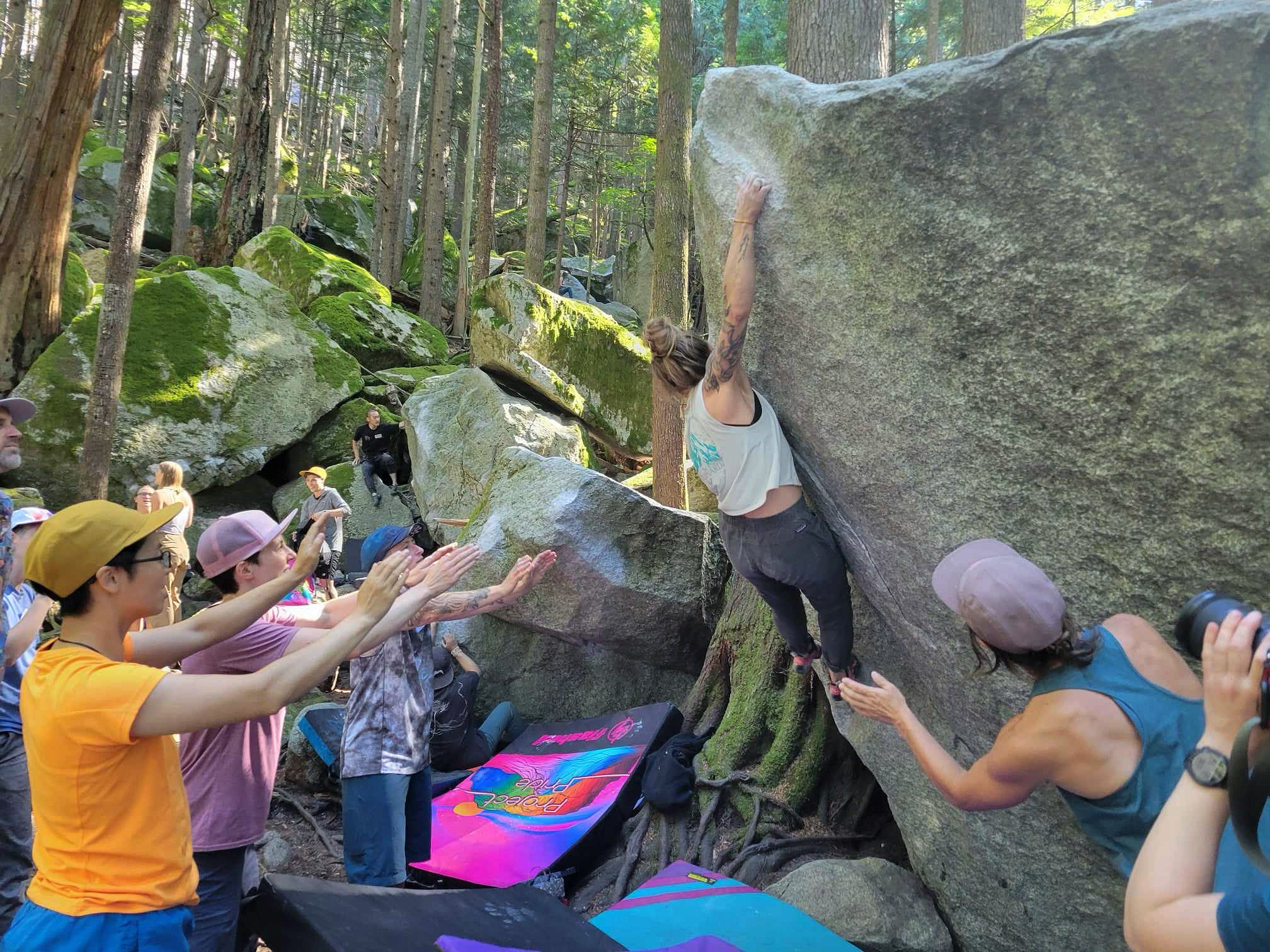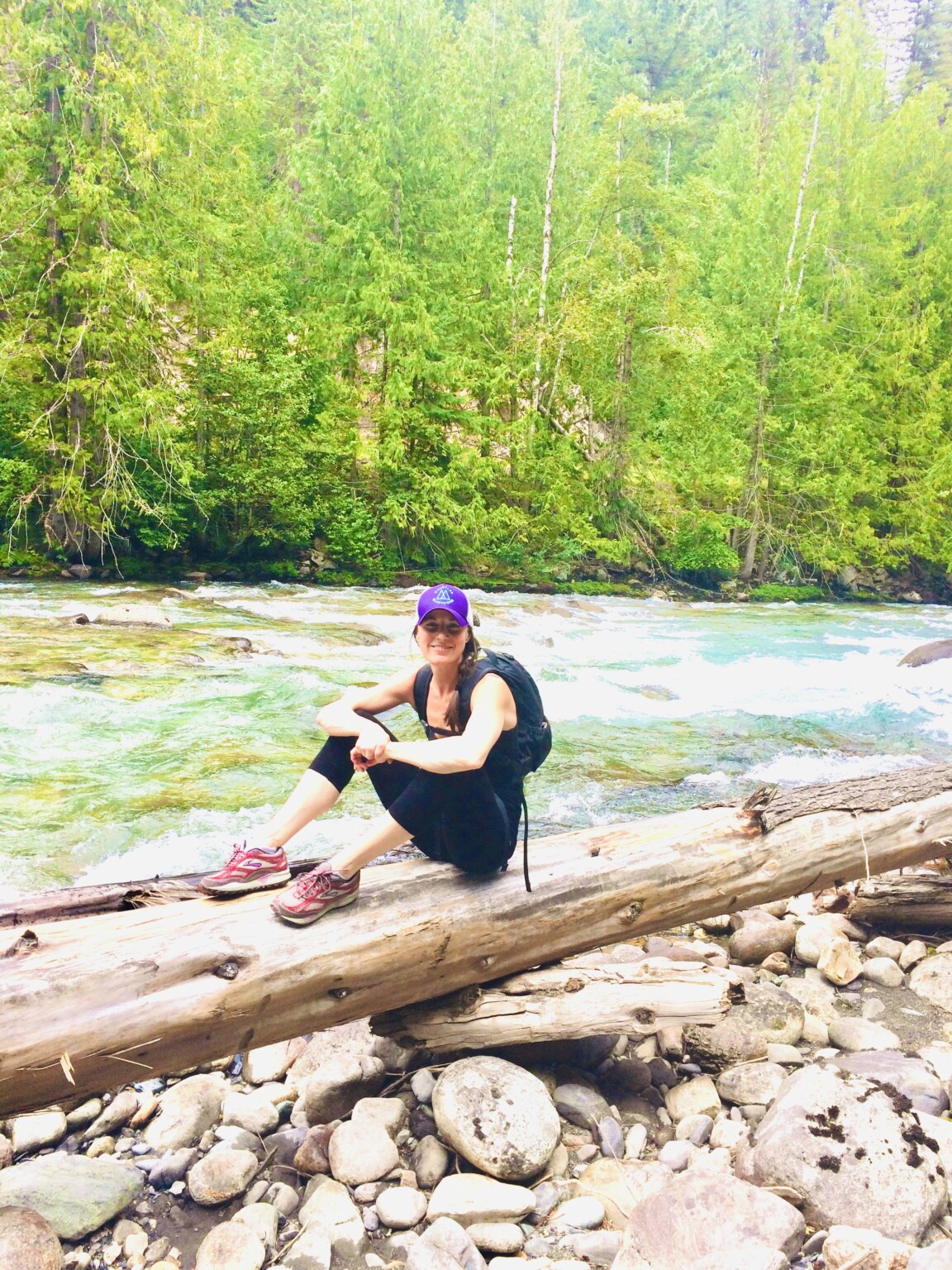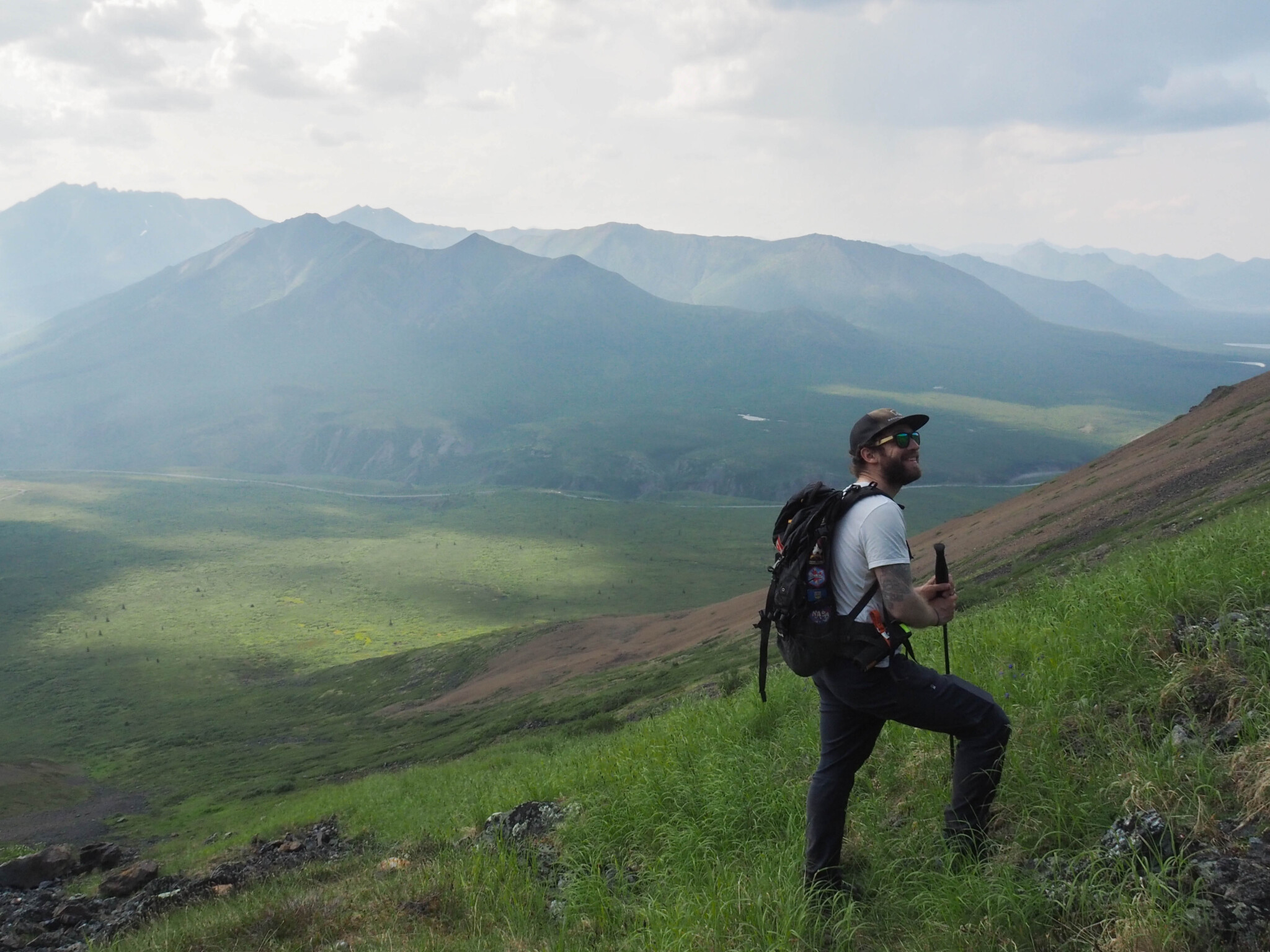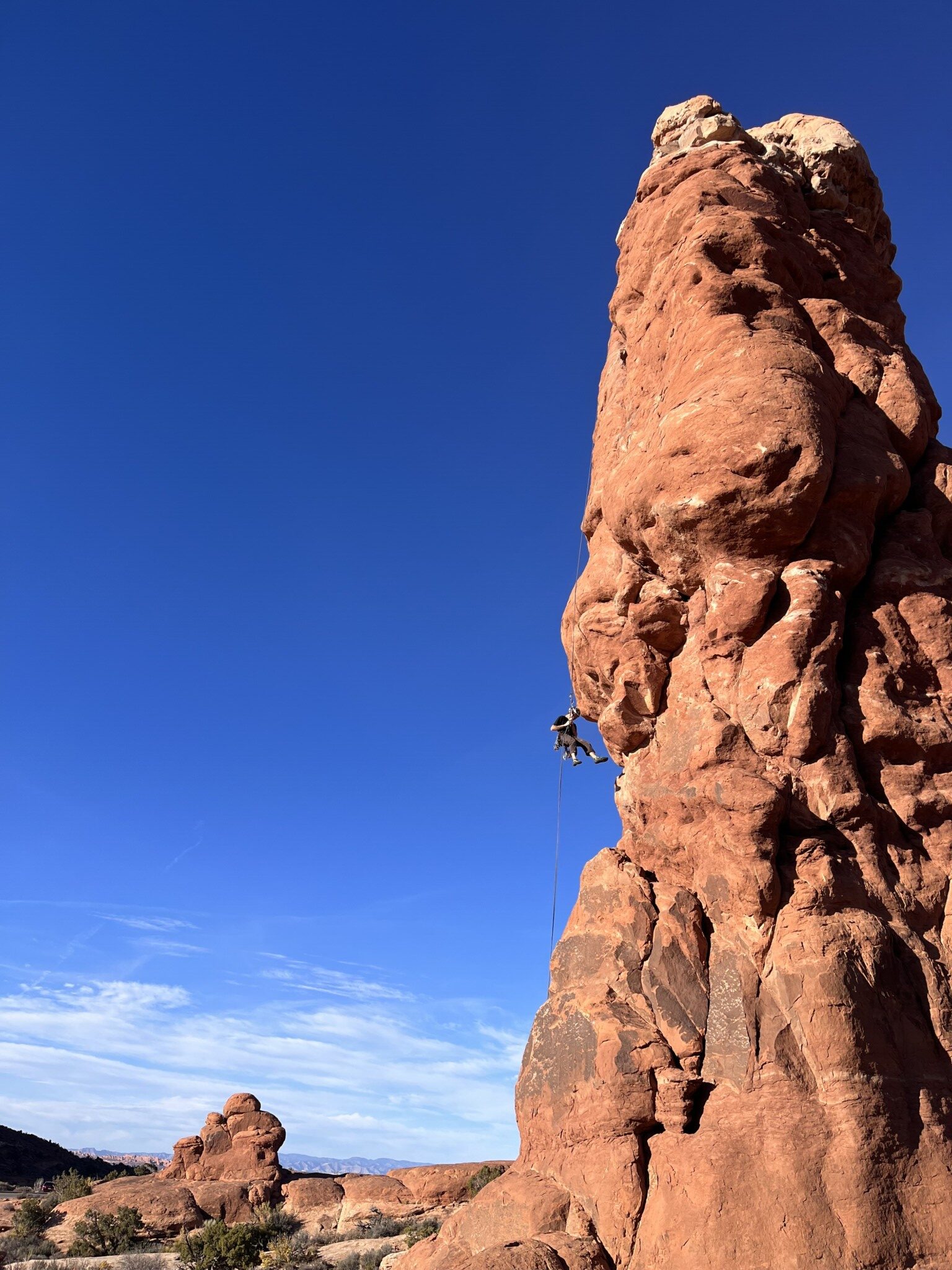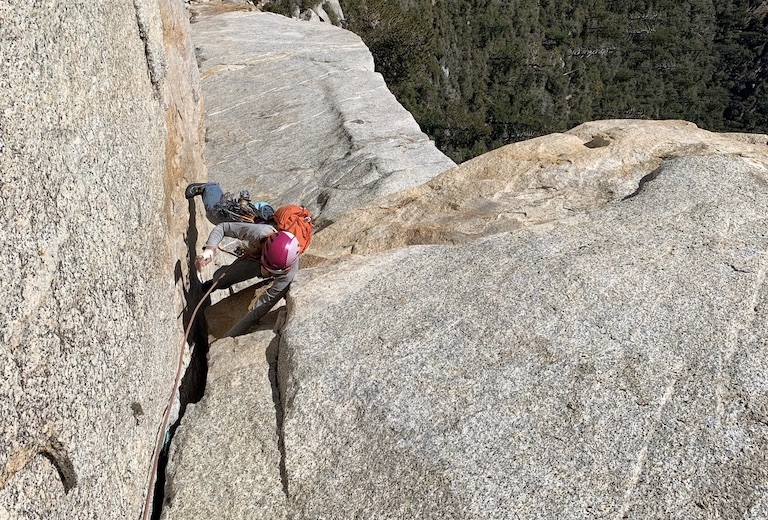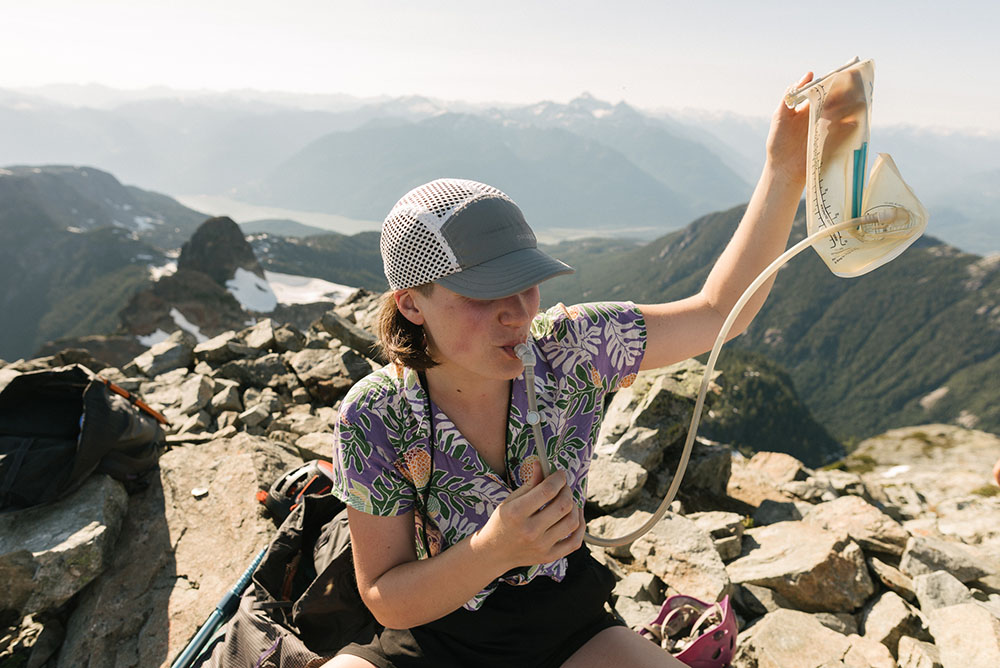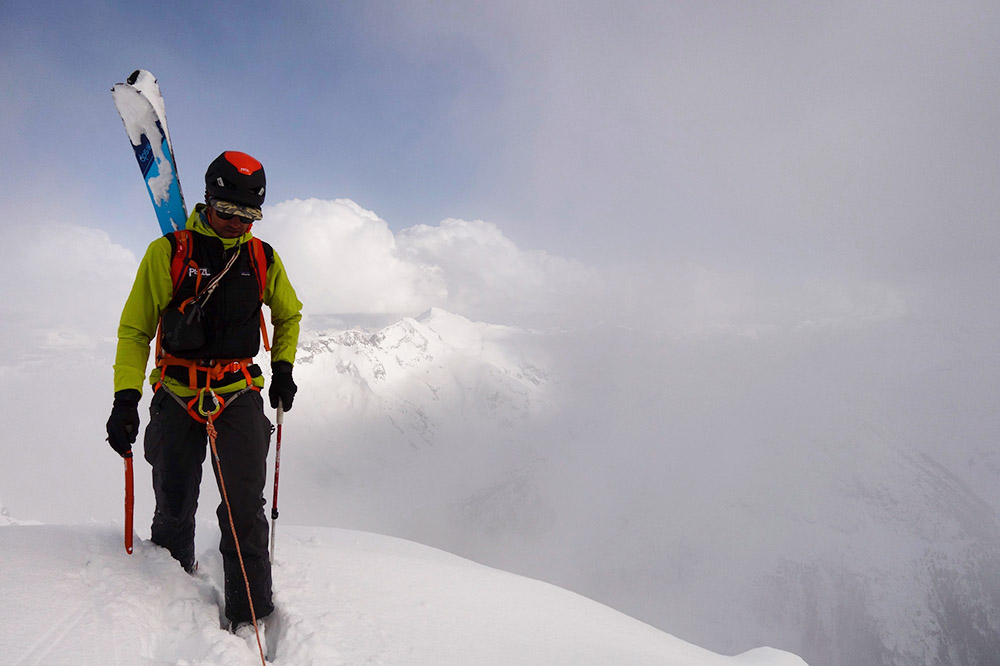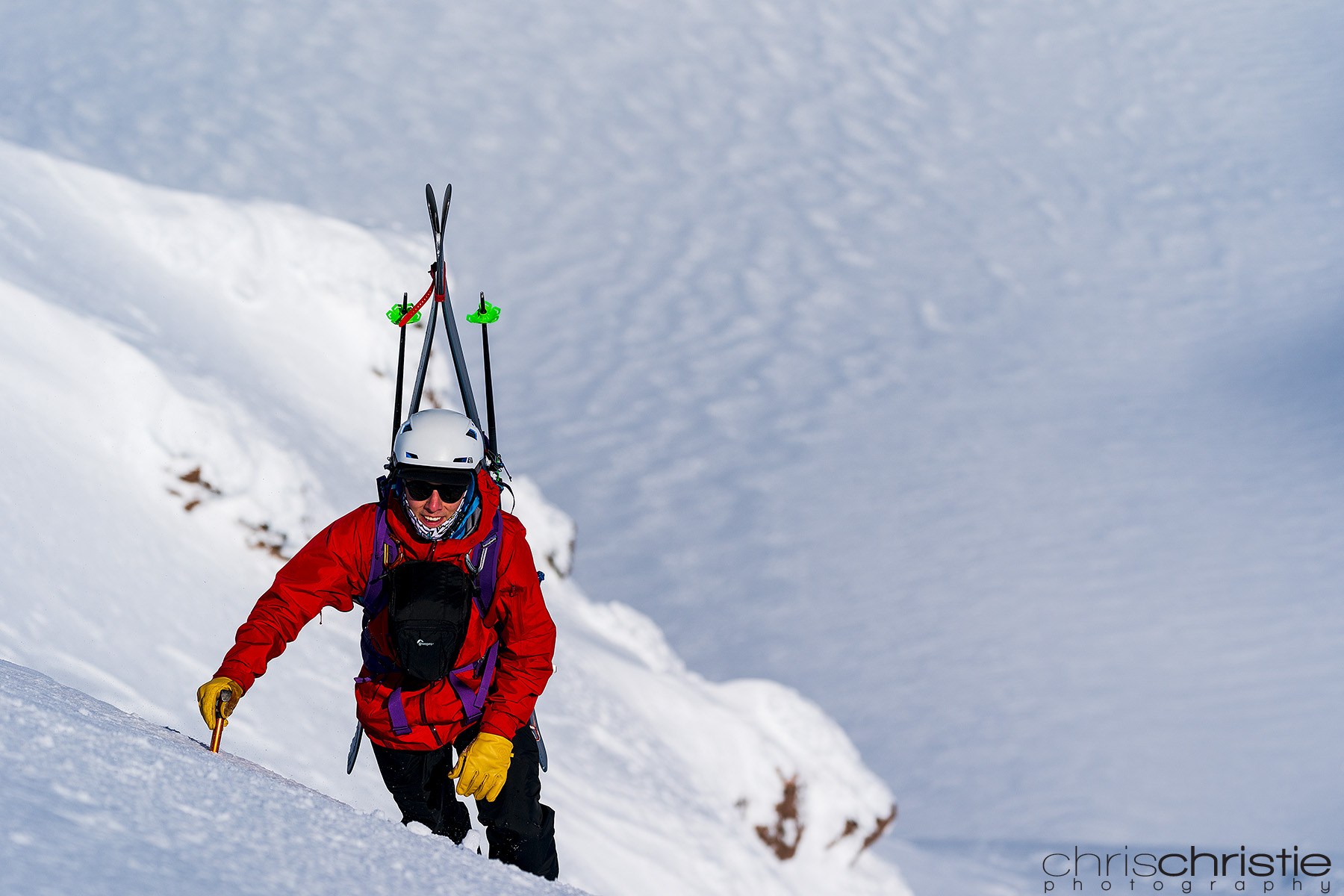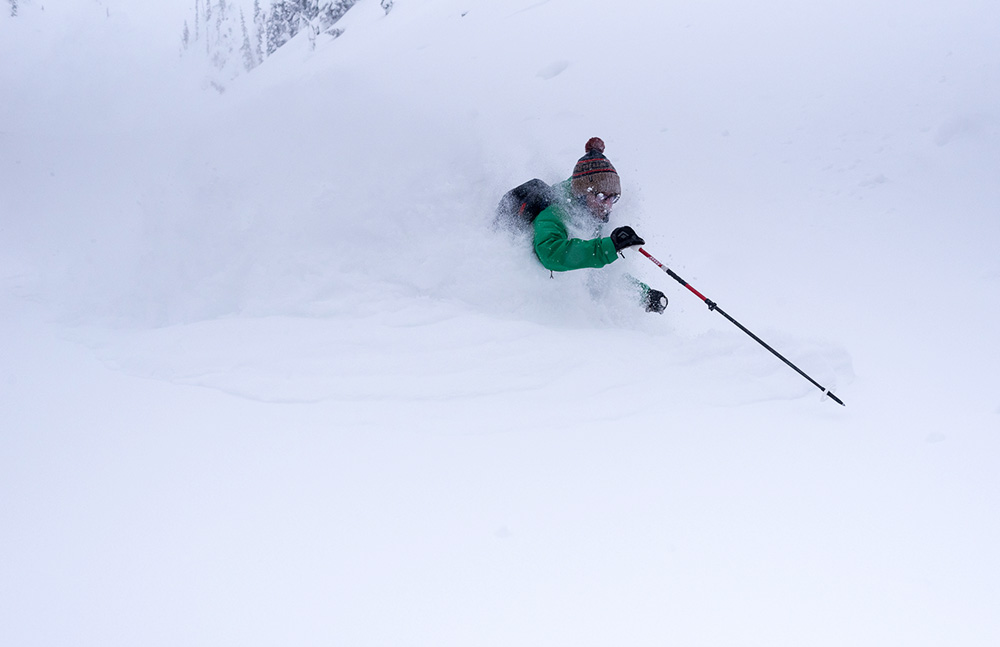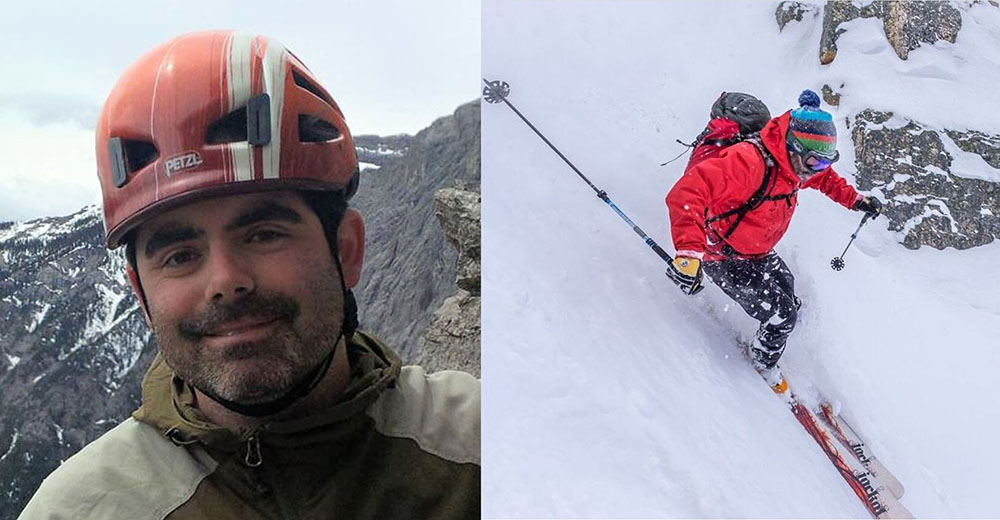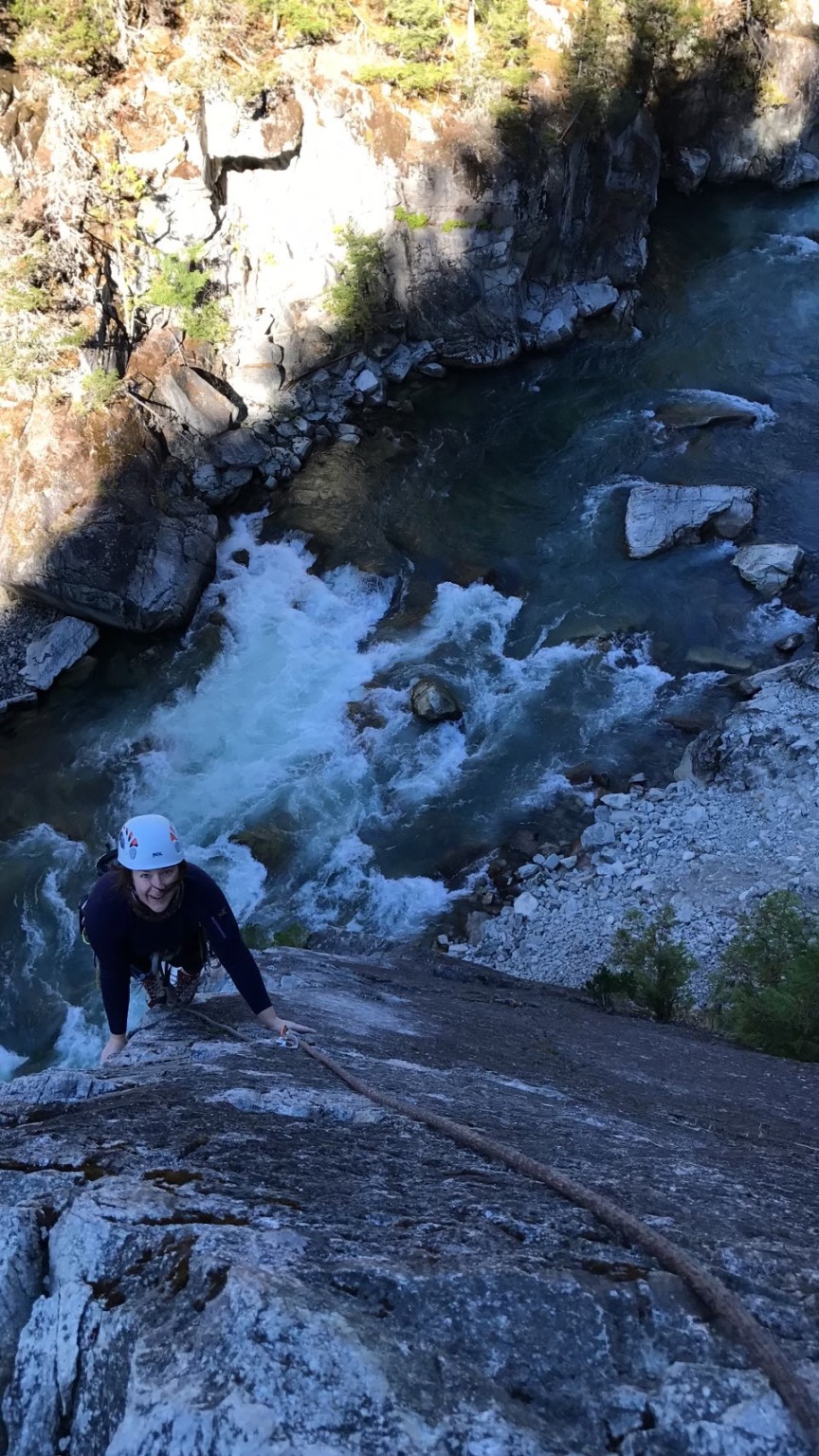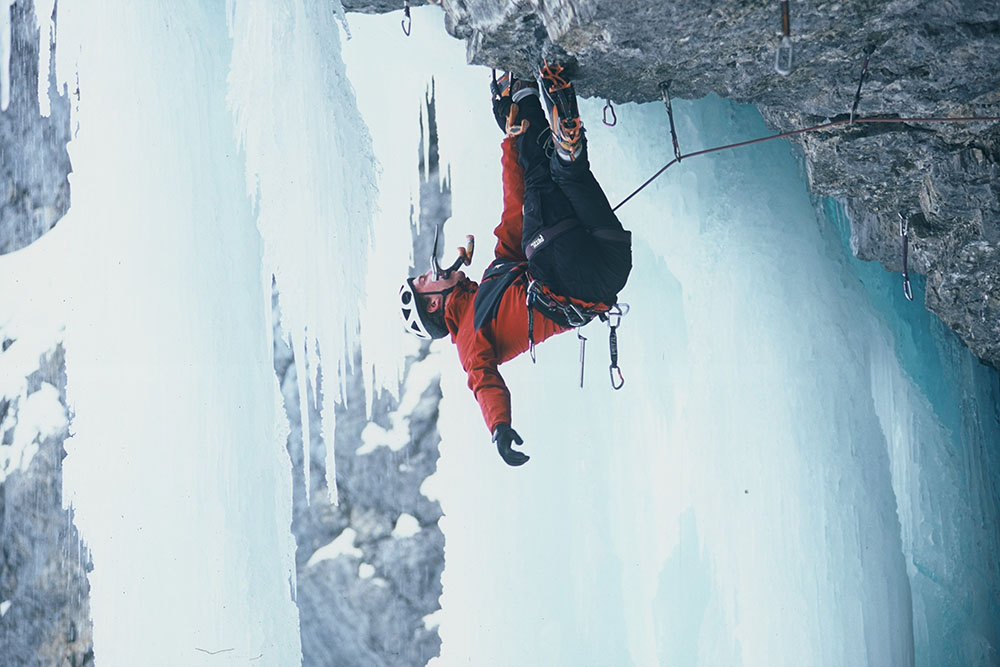Authors: Sara Lilley and Isobel Phoebus
The Plan
The main purpose of the Valhalla expedition was to challenge ourselves in a new arena of climbing: big walling. Our assembly of an all-female team was intentional. Time and again, women have proven themselves in the sport of climbing, and are now performing at the highest levels alongside their male counterparts. However, only a small handful of women have been recognized in the realm of Canadian adventure sports, particularly big wall traditional climbing. The value of coming together to tackle a remote, seldom climbed big wall was to bring women to the forefront of the Canadian climbing stage.
Our main technical objective was to climb the north face of Mount Dag, a big wall within the asserted traditional territory of the Ktunaxa Nation, the Syilx Okanagan People, the Shuswap Nation and the Sinixt Nation. In Valhalla Provincial Park, Mount Dag sits amongst the vast wilderness of the Mulvey Basin and its incredible rock faces. With the exception of Gimli Peak, most are rarely climbed. Dag’s north face is over 950 meters high, which makes it one of the tallest walls in British Columbia. The impressive face is scarcely climbed because of its remoteness, the multi-day commitment, and the technical difficulty of climbing, including hauling heavy bags. Big wall climbing in the Valhalla Range initially received attention in 1971 when John Roskelly and Roy Kligfield established the first Grade VI in Canada’s mountains on Dag’s north face without the use of fixed ropes or helicopter transport. The result: Sweet Judy Blue Eyes (Grade VI 5.9 A2). Since this route, more technical lines have been established. We aimed to free climb Riding Skinfaxi (ED2 5.11+), a stepping stone towards future expeditions.
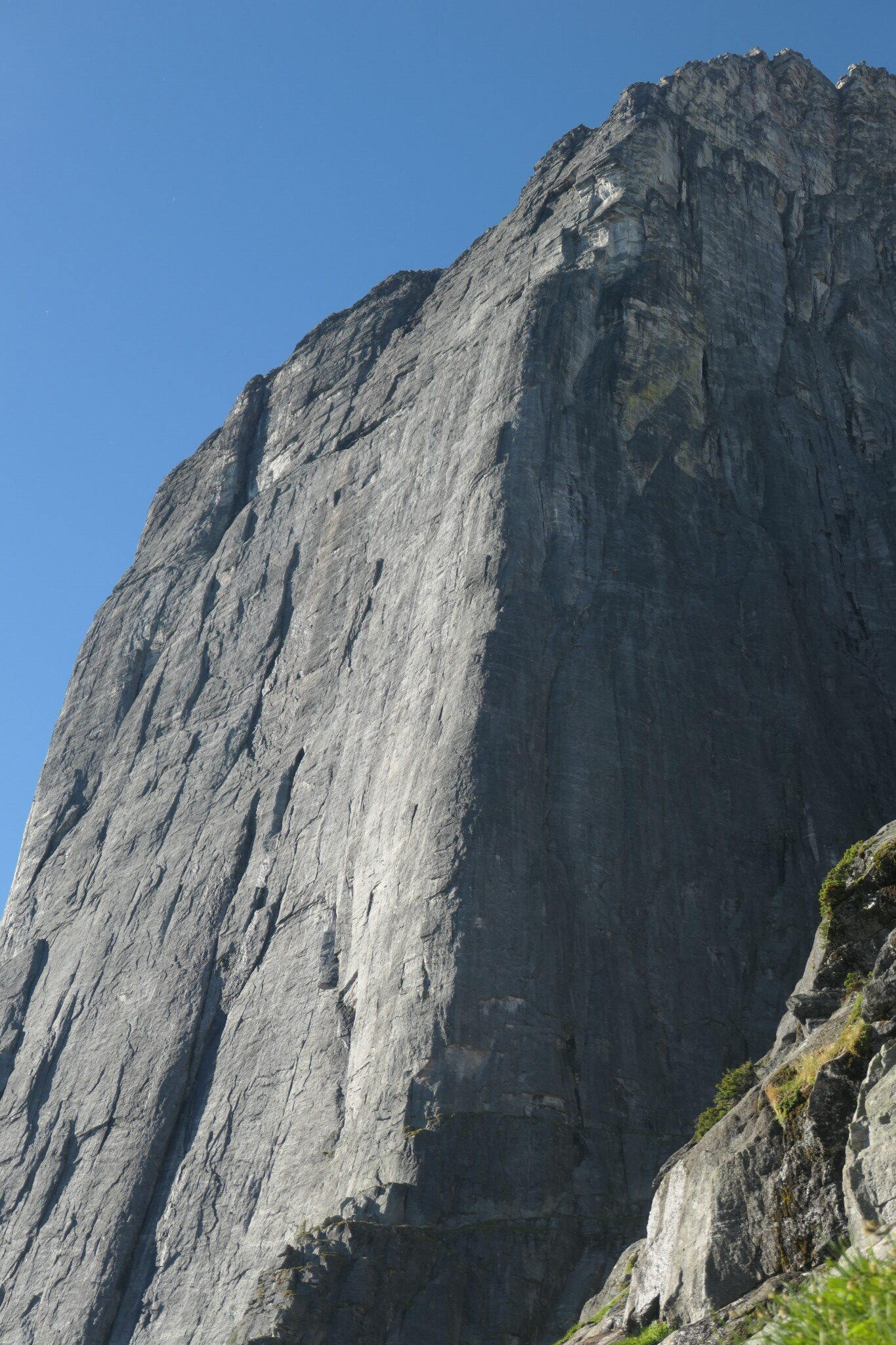
Training for Big Walls
With a backcountry basecamp near Gimli Peak, we had easy access to an abundance of exquisite multi-pitch routes with which to hone our skills. Having studied from Andy Kirkpatrick’s “Higher Education”, we settled on a method for a three-person team to climb and haul Riding Skinfaxi’s 25 pitches. For each pitch, we would delegate one leader, one follower to jug/haul, and one follower to clean the gear. As opposed to the classic two-person set-up, this system has one of the followers jug a separate, free-hanging rope. This jugger will then carry out the hauling duty on this separate rope, while the other follower cleans the pitch.
For fear of damaging a fresh dynamic rope, we opted for a heavy static rope to haul (Petzl Push, 9 mm, 70 m). The leader climbed with a pair of half ropes. Should one rope get damaged, the other would (hopefully) remain in good condition. Knowing the leader would also be weighed down with a double rack, they would carry a thin tagline (Petzl Pur Line, 6 mm, 65 m) on their harness, rather than the heavy static line.
Our big wall system flow:
- The leader climbs up and builds a wide anchor with two master points if possible. One point is for hauling, the other for belaying.
- The leader pulls up the double ropes and puts the second on belay.
- The leader uses the tagline to pull up the static haul rope to their anchor. An option here is to attach a hauling kit (pulleys, GriGri, biners, etc.) to the tagline to avoid leading with the kit.
- The leader threads the static rope through the hauler (Petzl Pro Traxion) on the haul point. On the slack end of the rope, they fix the rope for the jugger, using a Figure-8 on a Bight. Following this order ensures that the jugger has a back-up on the hauler. The leader yells down “Rope Fixed!”, which also implies that the second is on belay.
- Like a bat out of hell, the jugger ascends the fixed rope. The sooner they reach the anchor, the sooner hauling begins.
- The second climbs and cleans the pitch, if possible staying close to (but not under) the haul bag to prevent the bag from getting stuck (attaching a small cord between the haul bag and cleaner can be useful).
- Once the jugger reaches the belay, they begin hauling.
- Rinse and repeat.

The Process
Okay, that’s all well and good! But here’s what went wrong…
Putting this system into practice, we were surprised at just how slow and laborious it was. In some sense, this is the nature of the beast with remote big walling. With no fixed anchors, setting up a bomber belay with multiple master points is time consuming. Hauling a heavy 140+L bag over roofs, up corners, and over slab posed an interesting challenge for the cleaner who attempted to keep the bag away from obstructions. Having four ropes to manage was a recipe for disaster. The ropes not only tangled on themselves, but they also lodged themselves deep into beautiful gneiss flakes. After taking 8 hours to climb, jug and haul a mere three pitches of 5.10, we were humbled to say the least.
Going into this trip, we were consciously skipping a few levels. We had a big goal in mind, and intended to learn as much as we could together. While familiarizing ourselves with the rock and big wall techniques, our weather window was diminishing and we were unable to execute the three-person system efficiently enough to justify the headwall of Mount Dag. We didn’t go for it on this trip, but we made leaps in bounds for a future attempt.
Take-Aways
- Use rope bags: Sturdy bags are instrumental for managing ropes. When you have three or four separate ropes, bags are a great tool to keep them from tangling.
- Don’t cross your ropes: If the doubles ropes end up crossed, the tagline could get entangled in a loop created by the cross. This could make a big mess that may take a long time to fix. A single rope may work best.
- Use rope protectors: Rope protectors are very, VERY important to use where the jugging line runs over sharp edges. Tape is a nightmare… just use a rope protector!
- Minimize communication: Do your best to stick to the designated phrases. “That was sick!” may sound like “Rope fixed!”. Leave the conversational banter for when you’re side by side.
- Protect knots: A knot in a loaded rope will get abraded very quickly. We used the top half of plastic bottles to protect the rope knots.
- Keep it light: The value of climbing light should not be underestimated. Carrying less weight means a smaller haul bag, and a smaller haul bag may mean a lighter haul rope. The same can be said for any bag you keep on your back while climbing.
Train for the type of climbing you’ll be doing: This sounds obvious, but warming up to the climbing style will increase your speed. Slow leads were one of our major limiting factors, especially at the start of our trip.
Our Little Dag Story
Once we decided our big wall system for Mount Dag was not the right fit for us, we discussed alternative options: climb more classics in the Mulvey Basin, explore untouched terrain, or dive into a different alpine mission with minimal beta and in an unfamiliar style. We chose the latter, tailoring the objective to our team. Through this process, we learned important lessons about managing big goals, staying open minded, group dynamics, and communication. Our individual strengths, independence and ability to contribute to the team left us with feelings of respect and inspiration.
Our eyes were set on the Complete North Ridge of Little Dag (TD+ 5.9+), a 950+ meter ridgeline that parallels the massive headwall of our original objective. Taking advantage of a short weather window, we planned one bivy along the approach, two days on the wall and a mellow descent back to camp. We strived to be “light and fast” compared to our plan for Mount Dag, but still somehow ended up heavy and slow–a partial result of the fine line between proper preparation and minimalist packing. It seems we tipped the scale to the former, squeezing a little too much into our bags: double ropes, a triple rack, pitons, a hammer, an emergency bolting kit, bivies, sleeping bags and pads, a Jetboil, 12 L water capacity, food for 2.5 days, crampons, mountaineering boots, ice axes, poles, and lots of layers for the summer sun and the cold north face.
Our first day was right on schedule, but after a long approach to the base of the climb and difficulties finding water, we already lost precious time. The lower section of the route was an alpine jungle adventure. Moss, grass, shrubs and trees were plentiful, with the occasional rock. We aimed to follow the line of the first ascent by David Lussier and Steve Senecal in 2015. A few pitches and several hours later, we realized we’d ventured much farther left on new terrain. Finally leaving most vegetation below, we happily cruised up steeper, more consistent rock back on the normal route. However, that only happened after a team discussion on our progress, the hours of remaining daylight and the benefits of continuing on. Deciding it was worth the effort, we pushed for the bivy site at 2200 m in a vegetated scoop. Tired and committed, we settled down for a beautiful alpine rest.
Waking up to sun rays blasting across Dag’s north face, we climbed onwards. Pitch after pitch, we ascended simultaneously, stopping to take turns leading or to pass through harder sections one by one. We traveled on smooth slabs, dirty blocks, ridge aretes, grasslands, loose rumble, runout crests, unprotectable offwidths and glorious sunset chimneys. Just when we thought we were a quick scramble from summit victory, we found sketchy loose terrain and darkness. Our energy was low and our food diminishing. We took advantage of a steep rumbly ledge with a snowpatch and decided to stop, approximately 70 m below the summit. It was one of our favorite nights in the mountains. We set up a safety line along a short rock wall behind the snowpatch, flatted a narrow camp (exactly three bivies long), shared a pack of mashed potatoes, gazed at the starry sky above and the deep valley below, and slept so soundly. The next morning we pitched out a 5.8 to the summit, followed by a heavily involved 9.5 hour descent-traverse across a few peaks back to our Gimli basecamp.
Most accounts of mountain adventures hold a simple storyline of success. Although our initial objective still awaits, by the end of our expedition our cups were filled. We completed the first all-female, and quite possibly the second ascent, of a Canadian alpine TD+ ridge, we learned a lot about big walling together, and we are now more prepared to venture further into the Valhallas.
Collaboration
Through our partnership with OnwardUP, we were able to purchase a collection of high-quality technical gear. Here are some of our top-picks:
- Petzl Pur Line (6 mm, 65 m): This thin rope was great for tagging the static haul rope in our big wall system. It was also good for hauling a small, light bag (~20 L) in combination with the Petzl Micro Traxion. It proved to be durable even though it’s super light. We barely noticed its presence on the back of our harness when climbing. The Pur Line is quite stiff, making it easier to handle than more supple 6 mm ropes. However, it is still very skinny, slippery and tangles easily. We found this can be managed using stuff sacks while climbing. The following climber can assist with rope management by making sure the Pur Line always stays on top of other lead ropes, particularly while moving through overhangs where tangles are more likely.
- Petzl Pro Traxion: This device worked well with our Petzl Push (9 mm) static rope for hauling a 140+L haul bag. It was great for space hauling with Petzl Hand Ascenders, a Petzl GriGri and Petzl Gradisteps. Similarly, it was convenient for body hauling with a GriGri and optional Gradisteps. We found an oval carabiner in the bottom of the Pro Traxion and a Petzl Williams Screwgate on the top was a good combination.The ability to open the device and load a rope without unclipping from the main carabiner minimizes the chance of dropping–crucial on a big wall. There is also a helpful red indicator on the front panel, a safety feature shows if the device is locked or unlocked. The cam and teeth locking system is similar to the Micro Traxion, making it easy to use for those familiar with the smaller device.
- Patagonia Das Light: A comfy, light, warm jacket that is excellent for the chills of the alpine. We liked the two-way zipper and the cinch on the hood. It also worked well over a helmet, but when worn without one, the hood stands up high and gives off a bit of a conehead look. The downside is its compactness and the challenge of fitting it into the designated pocket. There’s also no cinch at the bottom to keep warmth in and bugs out.
- Patagonia Houdini: An ultralight yet durable windbreaker that is super compact, fitting and compresses well into its own chest-pocket. It effectively cuts out the wind, quickly adding warmth as you climb or belay. And there are great colour options! Our only disappointment was that the hood often slips off your climbing helmet.
- Patagonia Sun Hoody: this layer provided us with very necessary sun protection, it dries quickly and still smells fresh after 12+ days of consistent use. We did expect the material would be a little lighter. Thumb holes to protect your hands would be a great addition and the hood again didn’t stay on a climbing helmet very well, it’s better underneath.
Many thanks to OnwardUP for their enthusiasm and support for our expedition, particularly to Bexx Ferri. Gratitude goes out to Wild Mountains Eats and Save-On Foods for their contributions. We also appreciate the enticing stories and information from the committed climbers who have explored the north face: David Lussier, Stephen Senecal, Jasmin Caton, Cam Shute and Jason Magness.

